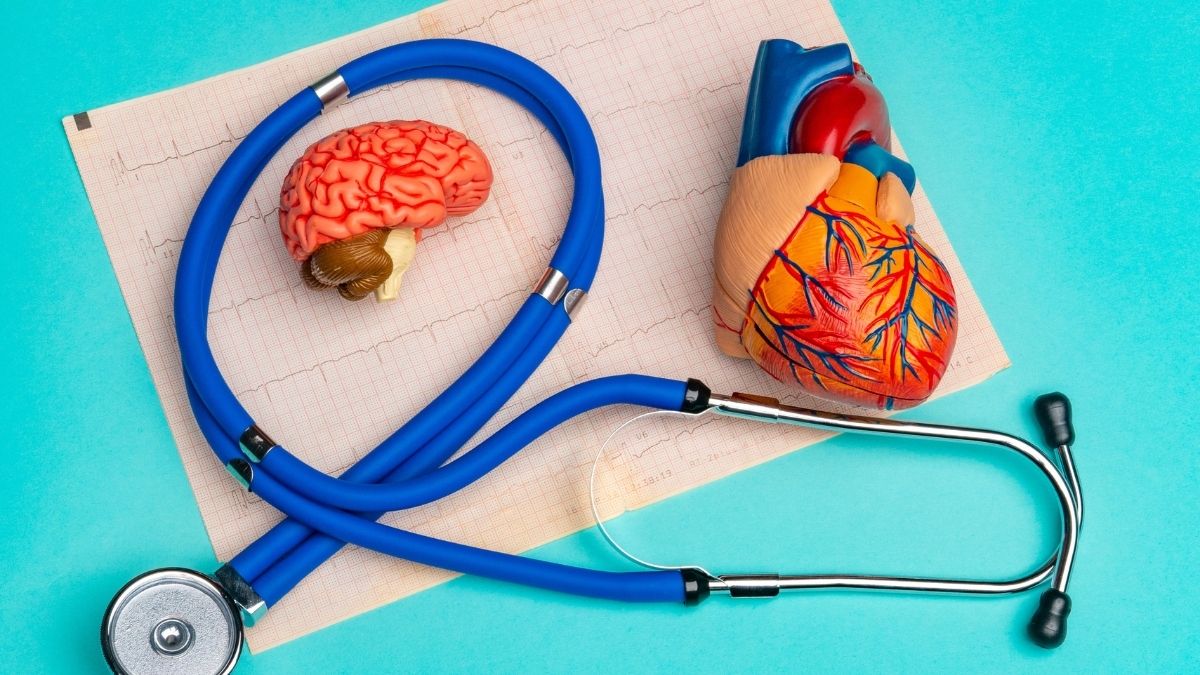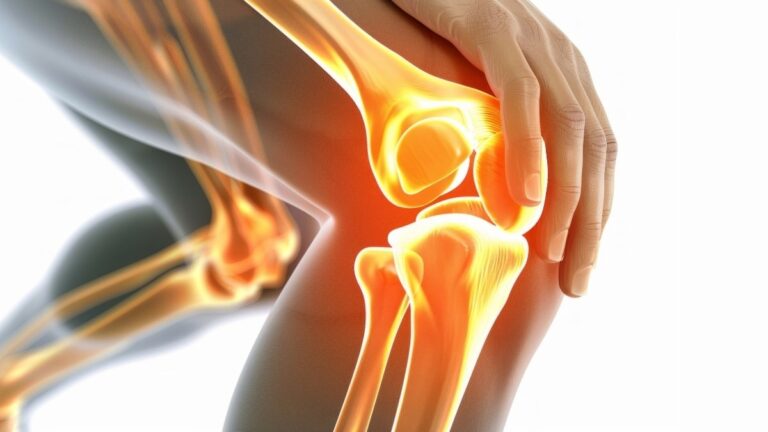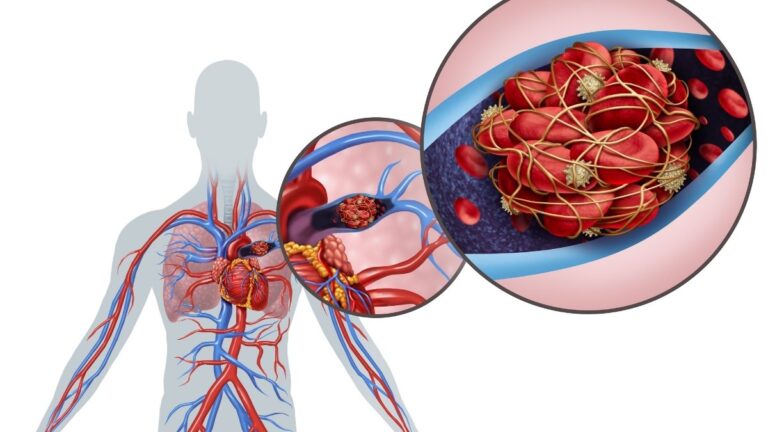The “Good Fat” Guide: Choosing Fats to Support Brain and Heart Health After 60 (According to the Cardiologist)
Your brain is nearly 60% fat—and after age 60, the fats you eat become more crucial than ever for protecting both your mental sharpness and your heart.
Despite decades of conflicting advice leaving many seniors unnecessarily avoiding all fats and missing essential nutrients, research confirms the same foods that protect your heart also protect your brain.
This guide cuts through the confusion, showing you which specific healthy fats for brain health and heart health after 60 you actually need, including exact daily omega-3 fatty acids amounts, simple meal swaps that require no complicated planning, and budget-friendly sources of brain-boosting fats that work for any lifestyle.
🍽️ The Healthy Fats Plate for Seniors (60+)
Your visual guide to balanced, brain-boosting meals
50%
Colorful Vegetables
Leafy greens, peppers, tomatoes, broccoli25%
Fatty Fish
3 oz servingSalmon, sardines, mackerel
25%
Whole Grains
Brown rice, quinoa, whole wheatAdd These Healthy Fats:
Omega-3 Content Per Serving:
💡 Pro Tip: Aim for this plate composition 5-6 days per week for optimal brain and heart health.
Why Your Brain and Heart Need More Attention to Fat After 60
You might think cutting fat is the answer to staying healthy. But here’s what most people don’t know: your brain is 60% fat. It literally depends on fatty acids to work properly and keep its structure intact.

After 60, your body changes how it uses food. Women need fewer calories—about 1,600 to 2,200 per day. Men need 2,000 to 2,600. When you’re eating less overall, every bite matters more. You can’t afford to waste calories on junk.
A March 2025 study showed something amazing. What you ate in midlife directly affects your brain connections and memory when you’re older. The food choices you make today shape your brain tomorrow.
But not all fats are friends. For every 10% increase in saturated fat in your diet, your risk of dying from any cause goes up by 24%. That’s huge. The wrong fats can literally shorten your life.
Here’s better news. A 2-year program focused on healthy eating improved memory and thinking in adults aged 60 to 79. Your brain can still get better with the right fuel.
Research from Harvard in 2022 confirmed that omega-3 fats boost how fast your brain processes information. They help you think more flexibly and remember better. These aren’t small changes. They’re the difference between staying sharp and struggling to recall names.
The Essential Fats Your Aging Brain Needs
Let’s talk about the fats that actually help you. Not all of them come from the same places, and your body needs different amounts of each type.
Omega-3 Fatty Acids: Your Brain’s Best Friend
Your brain craves two specific omega-3s: EPA and DHA. Most health experts say adults need 250 to 500mg of these combined every day. If you have heart disease, bump that up to about 1,000mg daily.

Here’s something cool. People who eat fatty fish have lower levels of beta-amyloid in their brains. That’s the protein that clumps up and forms brain plaques—the bad stuff linked to memory problems.
The best sources are fatty fish. Think salmon, mackerel, sardines, herring, and anchovies. Aim for three servings per week, about 3 to 4 ounces each time. And here’s a money-saving tip: canned fish works just as well as fresh. A 3-ounce serving of salmon gives you 1,500 to 2,000mg of omega-3. That’s way more than the daily minimum.
Plant-Based Omega-3s (ALA)
Plants don’t have EPA or DHA, but they do have another omega-3 called ALA. Men need 1.6g daily. Women need 1.1g. Your body can convert a tiny bit of ALA into EPA and DHA, but not much.
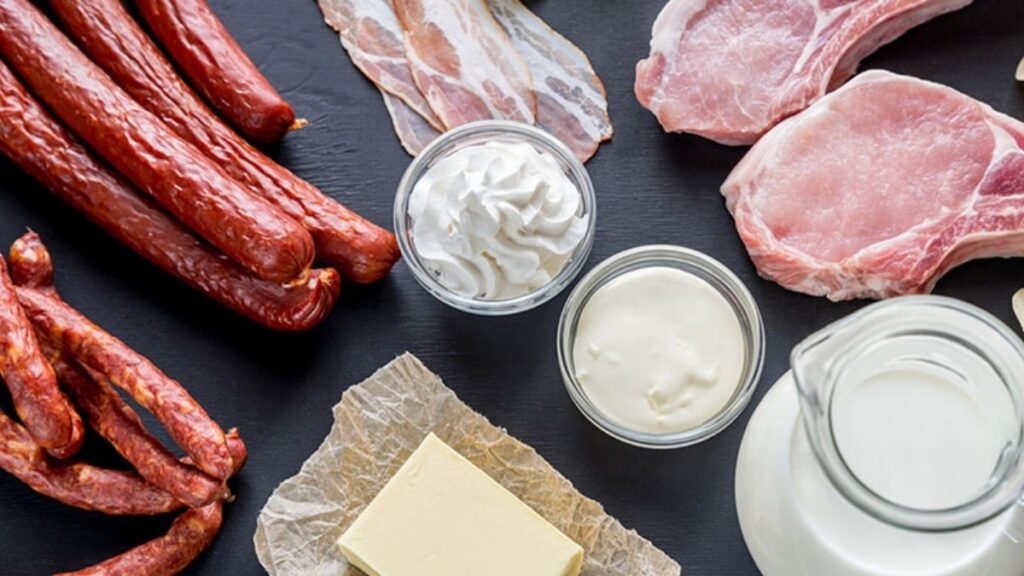
Great sources include walnuts, flaxseeds, chia seeds, and canola oil. Walnuts are special—studies link them to better scores on thinking tests. Two tablespoons of ground flaxseed gives you 3.2g of ALA. A quarter cup of walnuts? That’s 2.5g right there.
Monounsaturated Fats: The Mediterranean Secret
These are the fats that make the Mediterranean diet so powerful. Large studies show this eating pattern reduces heart disease risk by 28 to 30%. That’s almost as good as taking medication.
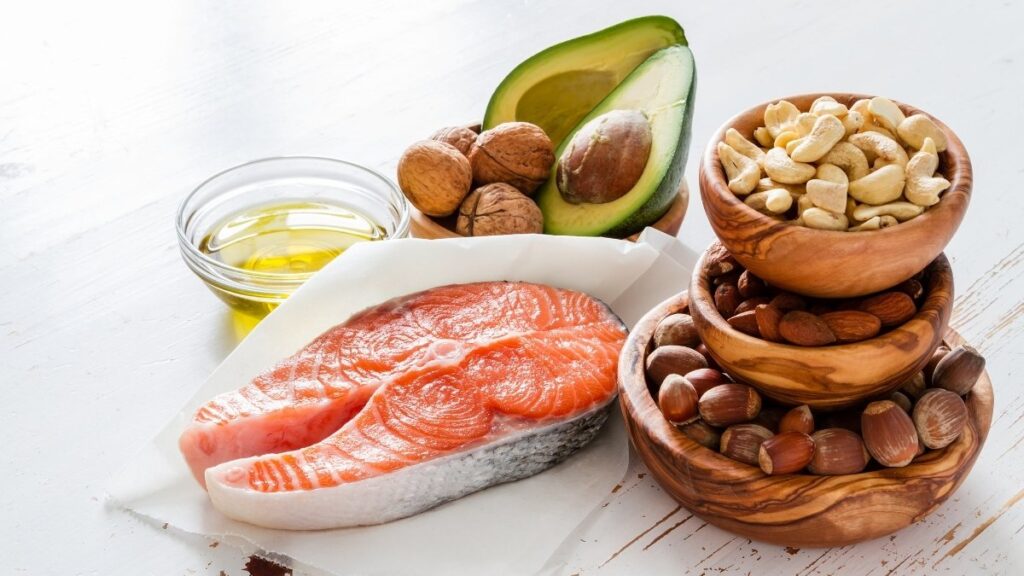
Your go-to source should be extra virgin olive oil. Use it as your main cooking fat. Other great options include avocados, olives, nuts, and even peanut butter.
The beauty of these fats? They protect your arteries while keeping your brain sharp. You get a two-for-one benefit.
How to Make It Work
You don’t need to obsess over numbers. Start simple. Eat fatty fish twice a week. Sprinkle walnuts on your morning oatmeal. Cook with olive oil instead of butter. Add half an avocado to your lunch salad.
Your brain will notice the difference. People who eat these fats regularly think faster and remember better. They have healthier blood vessels feeding their brains. Their hearts work more efficiently.
The fats your body needs are hiding in delicious, real foods. No weird supplements required. No expensive meal plans. Just smart swaps that taste good and make you feel better.
The Fats That Harm Your Heart and Brain After 60
Not all fats deserve a spot on your plate. Some actively work against you, especially after 60.
Saturated Fats: Know Your Limit
The American Heart Association says you should get less than 6% of your calories from saturated fat. On a 2,000-calorie diet, that’s about 13 grams per day. To put that in perspective, a fast-food burger can have 10 to 15 grams all by itself.

A study of elderly people showed that for every 10% increase in saturated fat ratio, heart disease deaths jumped by 26%. That’s not a small risk. It’s significant.
Does this mean zero saturated fat? No. You don’t need to eliminate it completely. But you do need to limit portions and be smart about your choices.
Trans Fats: The One to Avoid Completely
If there’s a villain in the fat world, it’s trans fats. Avoid these entirely if you can. Even though many places have banned them, they still lurk in some processed foods. Check labels for “partially hydrogenated oils.” If you see those words, put it back on the shelf.
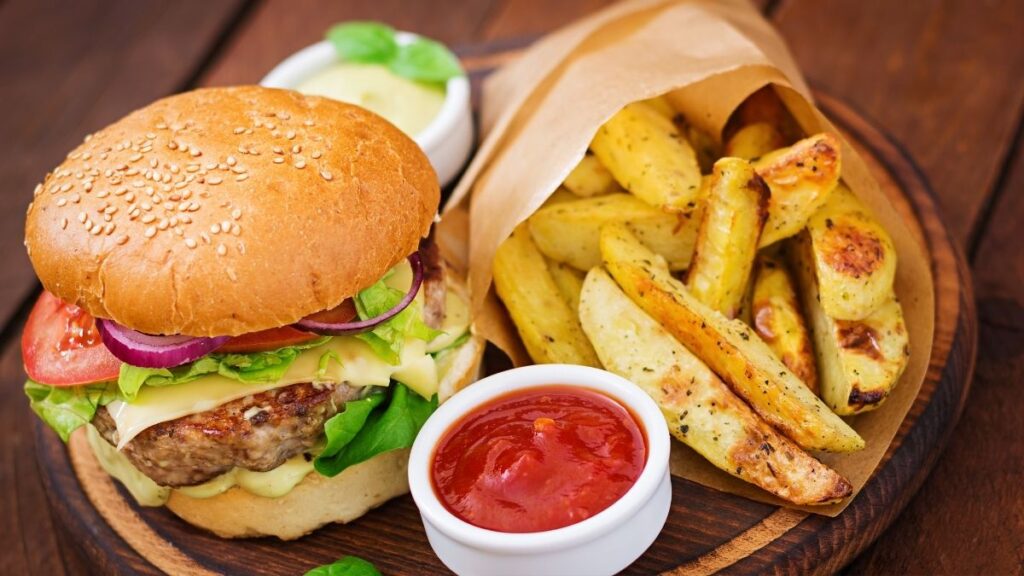
The Confusing Part About Dairy
Here’s where things get interesting. Some research suggests dairy fats might not be as harmful as we once thought. The 2025 dietary guidelines are taking a fresh look at this. But the research is still ongoing, so don’t go crazy with full-fat ice cream just yet.

The key point: when you cut saturated fats, replace them with unsaturated fats—not refined carbs like white bread or sugar. Trading butter for olive oil? Smart. Trading butter for a bagel? Not helpful.
Easy Swaps That Work
Making better choices doesn’t require sacrifice. Try these simple switches:
- Red meat → Fatty fish or chicken (two to three times per week)
- Butter → Extra virgin olive oil for cooking
- Full-fat dairy → Low-fat Greek yogurt
- Fried foods → Grilled, baked, or roasted versions
These swaps cut the bad fats while keeping your meals satisfying. You won’t feel deprived. You’ll just feel better over time—more energy, clearer thinking, and a heart that works the way it should.
Your body after 60 doesn’t bounce back from bad choices as easily. But it responds beautifully to good ones.
The Mediterranean Approach: Your Blueprint for Success
If you want one eating pattern that’s been proven to work, this is it. The Mediterranean diet isn’t a fad. It’s how millions of people have eaten for centuries, and the science backs up why it works so well.
Why It Works So Well
This way of eating reduces heart disease by about 30%. That’s roughly the same benefit you’d get from taking a statin drug, but you’re doing it with food. The famous PREDIMED study showed that people who ate Mediterranean-style with extra olive oil or nuts cut their heart problems by 30%.

When you combine this diet with exercise and a healthy weight, your risk of early death drops by 80%. Those are the kind of numbers that make doctors excited.
The Core Rules
It’s simpler than you think. Cook at least twice a week with tomato, onion, and garlic simmered in olive oil. This combo forms the base of countless Mediterranean meals.

Use about 1 liter of extra virgin olive oil per week. That sounds like a lot, but it replaces other fats you’d use anyway. Or eat 30 grams of nuts daily—about a small handful.
Here’s an underrated tip: eat your meals seated, and make them last at least 20 minutes. This isn’t about the food alone. It’s about enjoying it, which helps you eat the right amount and digest better.
What Your Daily Plate Looks Like
Every meal should have vegetables and fruits. Not as a side thought—as the main event. Eat three servings of fish each week. Fill in the rest with nuts, eggs, and legumes as much as you want. Red meat and fatty cheeses? Less than one serving weekly.
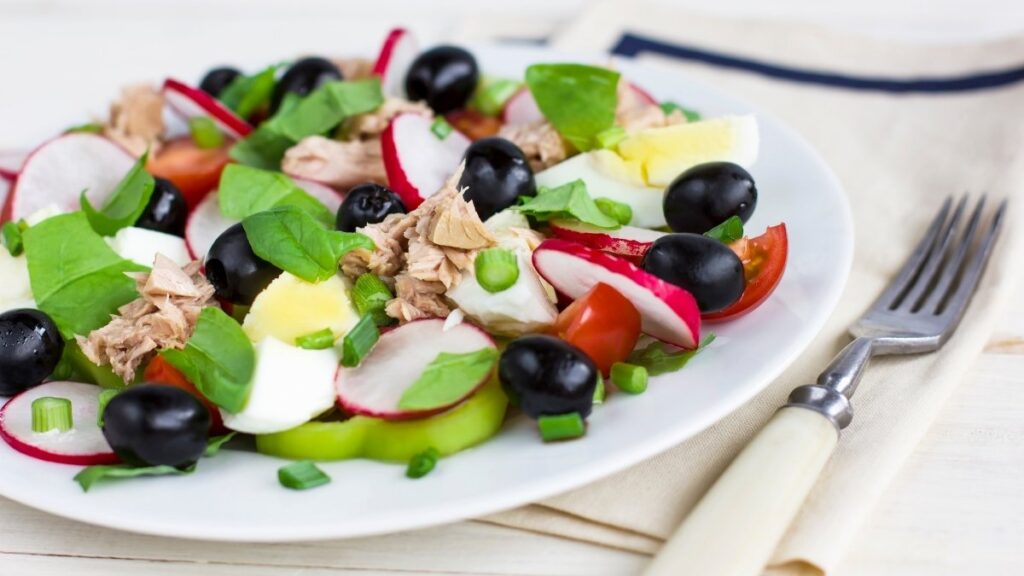
You’re not counting calories. You’re building meals around plants, healthy fats, and moderate amounts of lean protein.
Real People, Real Results
Studies followed people for years after they started eating this way. Their cholesterol improved. Their blood pressure dropped. They had fewer strokes and heart attacks. Their brains worked better as they aged.
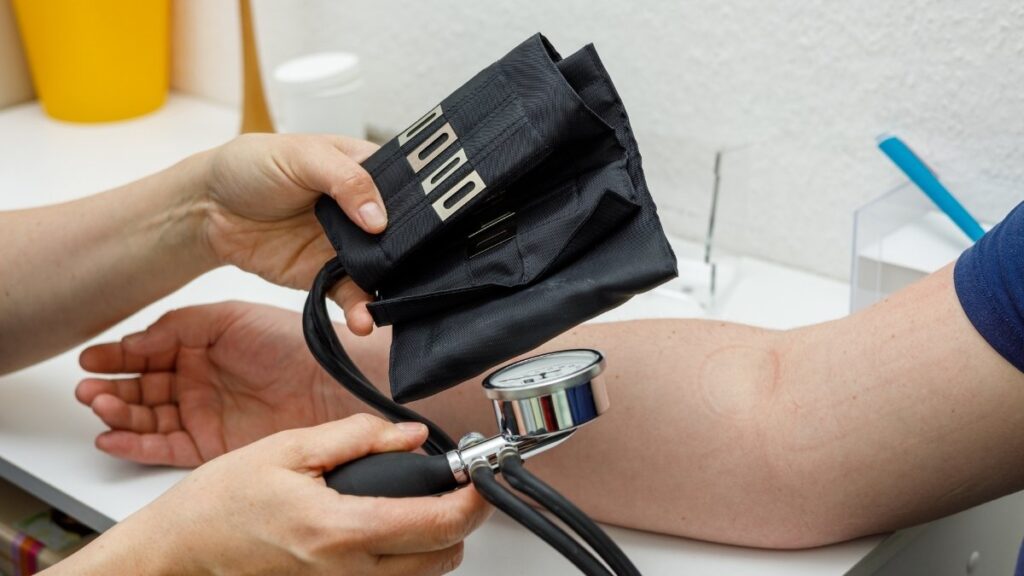
This isn’t complicated food. It’s salmon with lemon and herbs. Salads dressed with olive oil. Beans cooked with vegetables. Simple stuff that tastes good and happens to be exactly what your body needs.
The Mediterranean way of eating works because it’s sustainable. You’re not giving up flavor. You’re not hungry all the time. You’re just making smarter choices that happen to be delicious.
Your Weekly Meal Plan: Simple Swaps for Healthy Fats
Planning meals in advance takes the guesswork out of eating well. Here are real meals you can make, organized by when you eat them.
Breakfast Ideas That Actually Taste Good
Start with Greek yogurt topped with walnuts and berries. The yogurt gives you protein, the walnuts add omega-3s, and the berries taste amazing. Or try avocado toast on whole grain bread—mash the avocado with a little lemon juice and salt.

Oatmeal topped with ground flaxseed and sliced almonds works too. If you want something warm and filling, poach an egg and serve it on whole wheat with greens sautéed in olive oil.
Lunch Options for Any Day
Make a sardine or salmon salad on mixed greens. Canned fish counts. Add olive oil and vinegar for dressing. A hummus veggie wrap with sliced avocado packs protein and healthy fats.
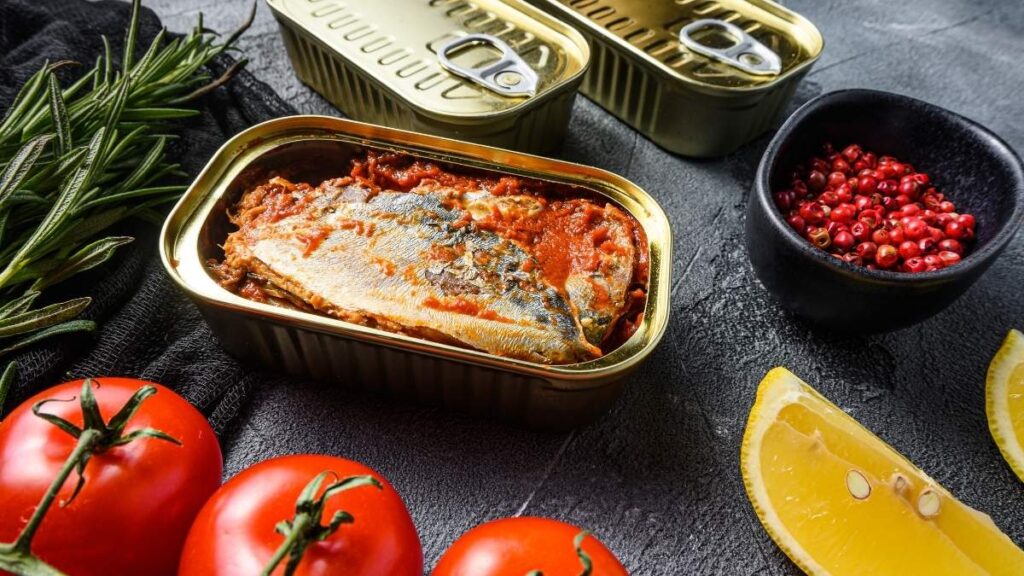
Lentil soup drizzled with olive oil before serving adds richness. Or mix light tuna with white beans and olives for a Mediterranean-style lunch bowl.
Dinners Worth Looking Forward To
Bake salmon with tomatoes, onion, fresh basil, and garlic in olive oil. The fish cooks in 20 minutes, and the vegetables create their own sauce. Grill chicken breasts and serve them with vegetables roasted in olive oil—zucchini, bell peppers, and onions all work great.
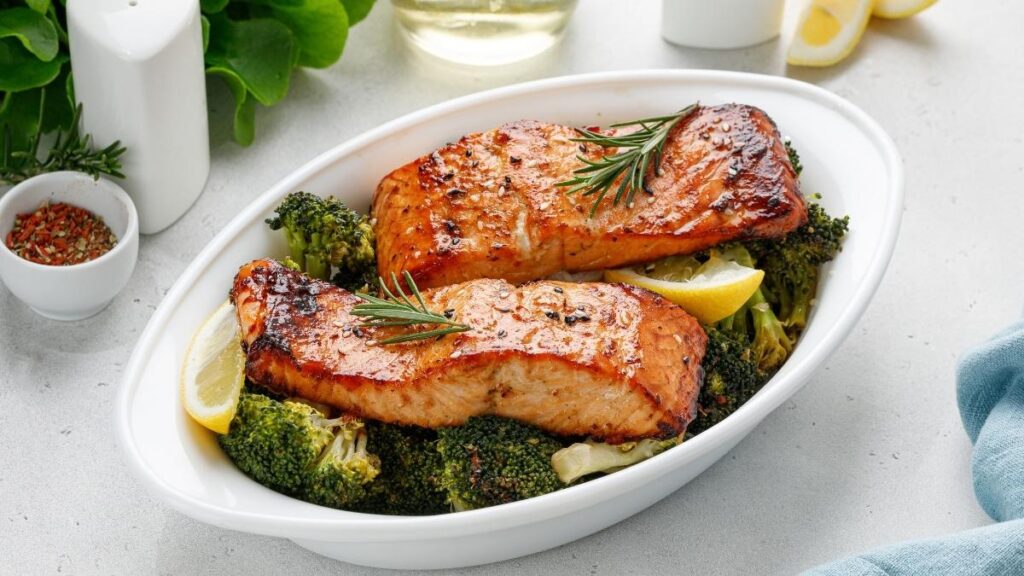
Try a Mediterranean chickpea bowl with tahini dressing. Or make shrimp pasta with garlic, olive oil, spinach, and cherry tomatoes.
Snacks That Keep You Going
Keep it simple. A quarter cup of mixed nuts—almonds, walnuts, and pecans. Olives with whole grain crackers. Apple slices with almond butter. Edamame sprinkled with sea salt.
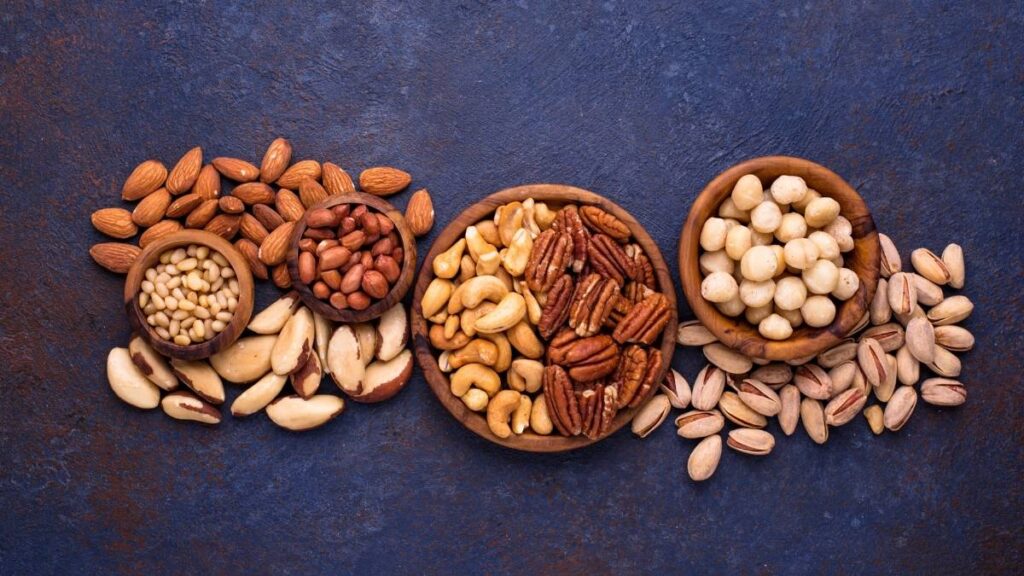
Make Meal Prep Easier
Every Sunday, cook a big batch of quinoa or brown rice. Wash and chop vegetables for the week. Portion out nuts into small containers so you grab the right amount. Keep your pantry stocked with canned fish, frozen vegetables, and nuts that don’t go bad quickly.
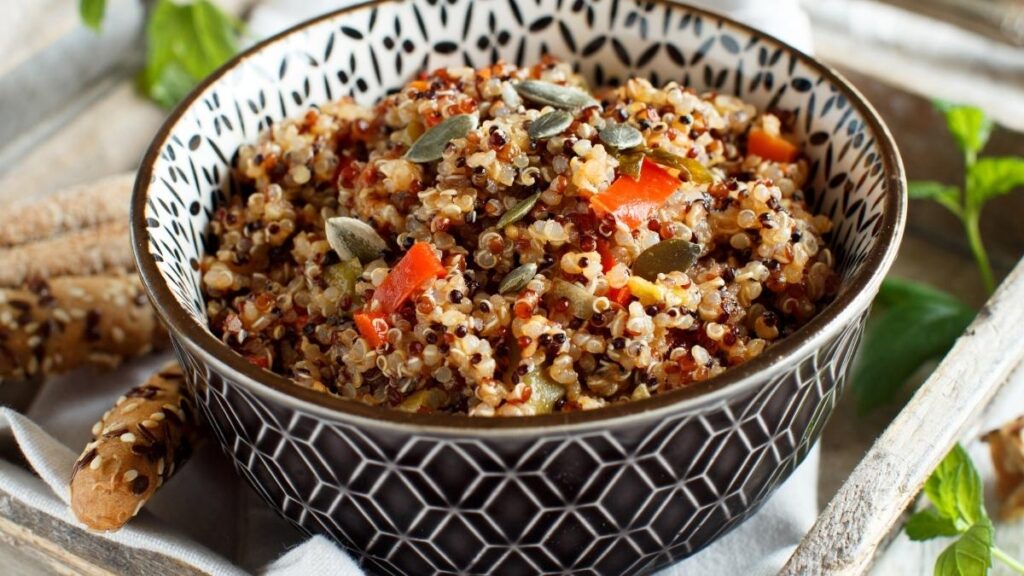
Batch-cook proteins on weekends. Grill four chicken breasts instead of one. Bake two salmon fillets. You’ll have ready-to-eat protein for quick meals all week.
The secret to sticking with healthy eating? Make it easy on yourself. When good food is ready to eat, you’ll eat it.
Shopping and Budget Tips for Healthy Fats
Eating well doesn’t require a huge budget. You just need to know where to find the deals.
The Cheapest Healthy Fats
Canned salmon and sardines cost $2 to $4 per can and give you two to three servings. That’s cheaper per serving than most cuts of meat. Frozen fish fillets often cost less than fresh and taste just as good. Don’t let anyone tell you frozen is inferior.

If chopping vegetables feels hard on your hands, buy pre-cut ones. Yes, they cost more. But if it means you actually eat them, they’re worth it. Store-brand olive oil works fine—just check that the label says “extra virgin.”
Buy nuts in bulk from warehouse stores. You’ll pay half as much as buying small containers. Same quality, way better price.
Smart Shopping Choices
Choose wild-caught salmon when your budget allows. It has more omega-3s than farmed. Look for “light” tuna, not albacore. Light tuna has less mercury and costs less too.
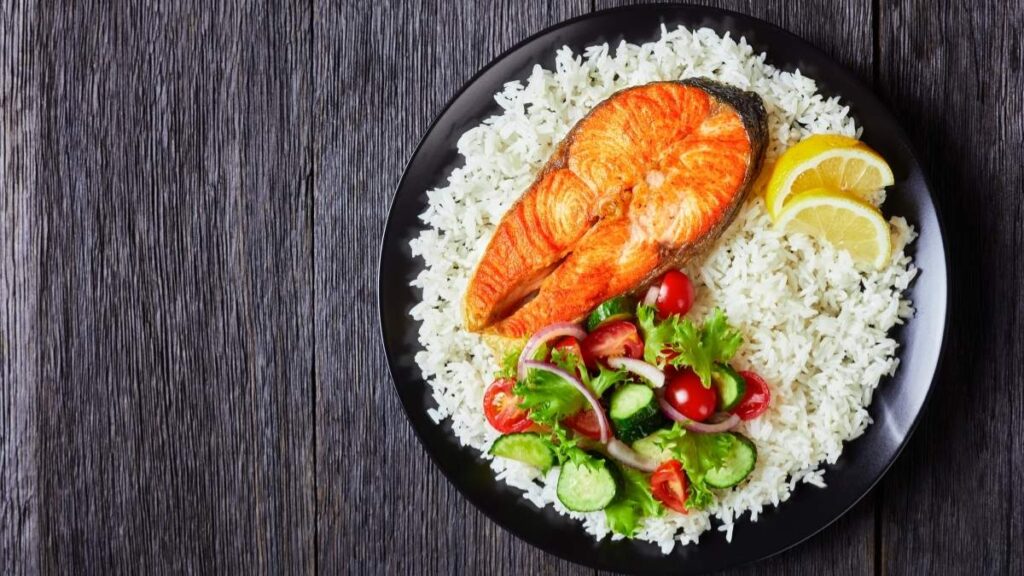
Buy walnuts and flaxseed in bulk, then store them in your freezer. This keeps them fresh for months and saves money. Plain Greek yogurt costs less than flavored versions. Add your own fruit at home.
Make Your Food Last
Keep olive oil in a dark, cool place—not next to your stove where heat breaks it down. Freeze nuts to prevent them from going rancid. They’ll last six months or longer in the freezer. Use opened bottles of oil within six months for best flavor.
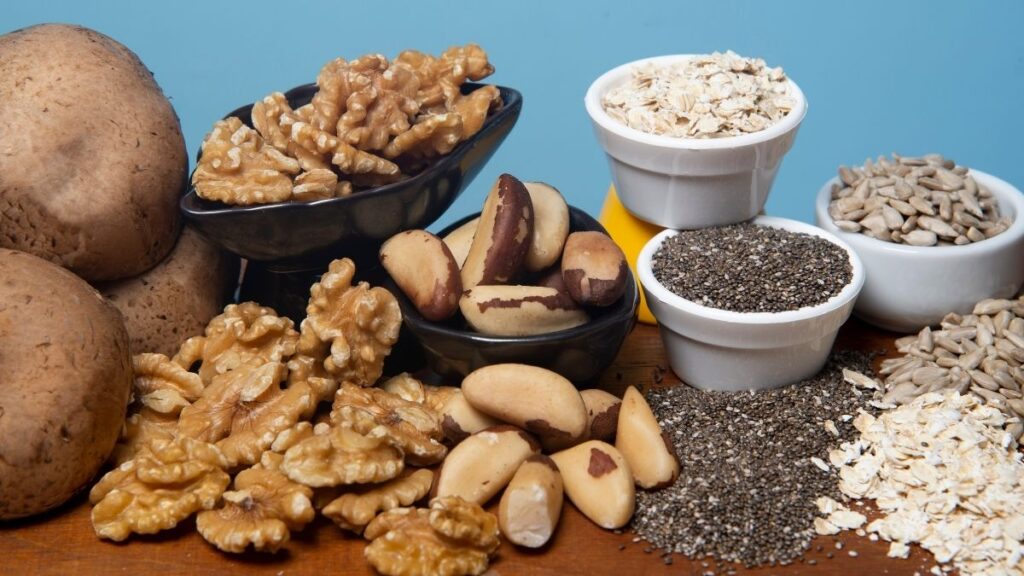
The goal isn’t to buy expensive specialty foods. It’s to make smart swaps that fit your budget and actually improve your health.
Common Mistakes to Avoid After 60
Even people trying to eat healthy fall into these traps. Don’t be one of them.
Mistake #1: Going Completely Fat-Free
Low-fat products sound healthy, but check the label. They often contain added sugar to make up for the missing flavor.

This leads to weight gain, not loss. Your body needs fat for hormone production, vitamin absorption, and keeping your cells working. Don’t cut it all out.
Mistake #2: Relying Only on Supplements
Omega-3 pills seem convenient, but they don’t provide the same heart benefits as eating actual fish. Whole foods come packed with other nutrients that pills can’t replicate. Use supplements to fill gaps, not replace real food.

Mistake #3: Cooking with the Wrong Oils
Some studies link canola oil to decreased brain function in animals. Play it safe. Stick with olive oil or avocado oil for cooking. They handle heat well and provide better nutrients.
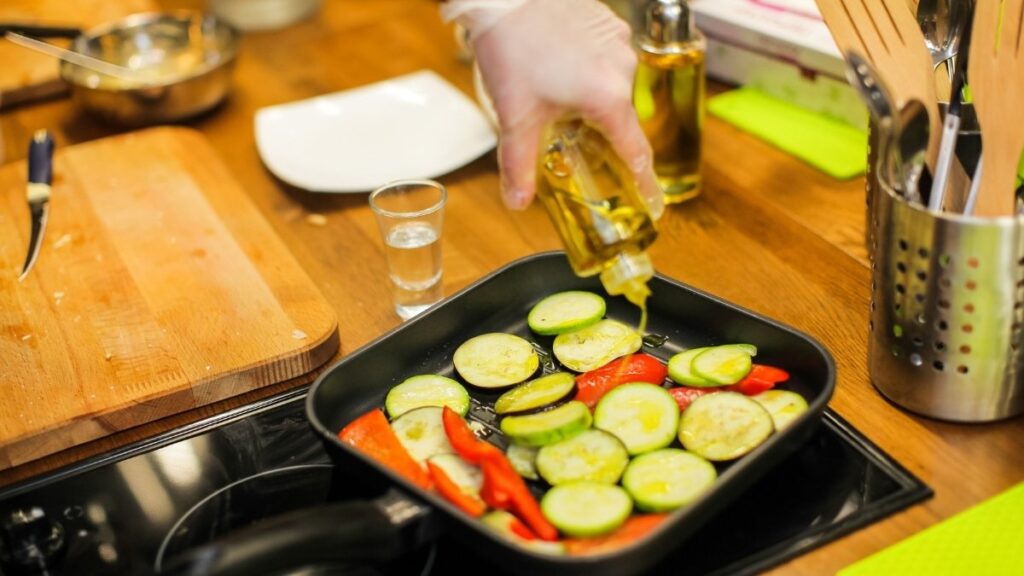
Mistake #4: Not Watching Portions
Healthy fats are still fats. They pack 9 calories per gram—more than carbs or protein. Even good fats require portion control. Use measuring spoons for oils. Measure out nuts instead of eating straight from the bag. It’s easy to overdo it.

Mistake #5: Ignoring Mercury in Fish
Avoid shark, swordfish, king mackerel, and tilefish. These big fish accumulate mercury. Stick with salmon, sardines, and light tuna. They give you omega-3s without the mercury risk.

These mistakes seem small, but they add up. Fix them now and you’ll see better results from all your healthy eating efforts.
Debunking Fat Myths for Seniors
Let’s clear up the confusion. Some things you’ve heard about fat are just wrong.
Myth #1: “All Fats Cause Weight Gain”
Research shows that moderate to high-fat diets lead to equal or even greater weight loss than low-fat diets. Quality matters more than quantity. Eating avocados and nuts won’t make you gain weight. Eating donuts will.

Myth #2: “Cholesterol in Eggs Is Dangerous”
Healthy people generally don’t have problems from eating eggs daily. Eggs contain beneficial antioxidants like lutein and zeaxanthin that protect your eyes. The cholesterol in eggs doesn’t affect most people’s blood cholesterol the way we once thought.
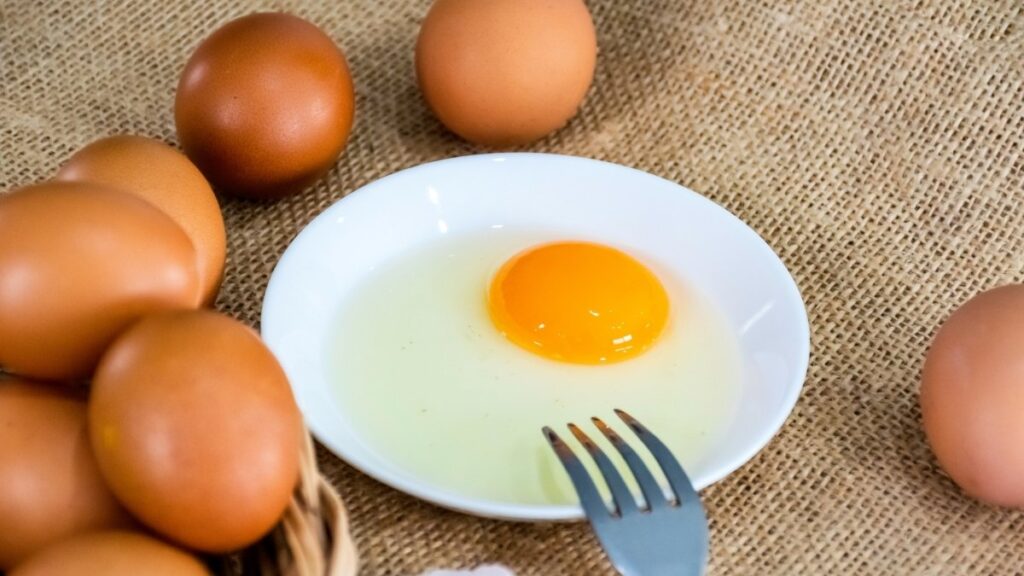
Myth #3: “Fat-Free Means Healthy”
Fat-free products are often loaded with sugar and refined carbs. They’re less satisfying, so you end up eating more. Real foods with natural fats keep you fuller longer and provide nutrients your body needs.

Myth #4: “Older Adults Can’t Change Their Health”
Studies prove that intensive lifestyle changes after 60 can enhance brain health. Your body responds to good nutrition at any age. It’s never too late to start eating better and seeing real benefits.

Stop letting these myths guide your choices. The truth is simpler and more encouraging than the myths.
Creating Your Personal Healthy Fat Action Plan
Ready to make changes? Here’s how to do it without overwhelming yourself.
Week 1: See Where You Are
Track what you eat for three days. Don’t change anything yet—just write it down. Identify where most of your saturated fats come from. Notice which healthy fats you already eat. This gives you a starting point.
Week 2: Make Simple Swaps
Replace one red meat meal with fatty fish this week. Switch to olive oil for cooking instead of butter. Add a small handful of nuts to one snack daily. Three small changes, that’s it.
Week 3-4: Build Your Habits
Plan your weekly menus. Include variety from each food group. Shop with a list organized by sections of the store so you don’t forget anything. Prep ingredients in batches on Sunday—wash lettuce, cook grains, portion nuts.
Track What Matters
Notice your energy levels throughout the day. Pay attention to your mood and mental clarity. If you get bloodwork done, watch for changes in cholesterol. Notice whether meal prep feels easier or harder as you practice.
When to Call Your Doctor
Talk to your healthcare provider before making major dietary changes, especially if you take blood thinners. Omega-3s can affect how blood clots. If you experience digestive issues with new foods, get advice. Your doctor should be your partner in this process.
Small steps work better than big leaps. Change one thing at a time, make it stick, then add the next thing.
Conclusion
Your brain and heart depend on the right fats to work well after 60. Focus on getting enough omega-3s from fish, choosing monounsaturated fats like olive oil, and keeping saturated fats limited. The Mediterranean eating pattern gives you a proven blueprint with decades of research behind it.
You don’t need to transform your entire diet overnight. That’s too hard and you probably won’t stick with it. Start with one change this week. Swap butter for olive oil when you cook dinner. Add walnuts to your morning oatmeal. Try salmon for dinner on Friday. Your brain and heart will thank you.
These changes aren’t about restriction. They’re about making smarter, science-backed choices that support your energy and vitality for years to come. Every meal is a chance to feed your body what it actually needs.
Try one new omega-3-rich recipe this week. Share this information with a friend who could benefit. And discuss these changes with your healthcare provider at your next visit.
Remember: choosing the right healthy fats for brain and heart health after 60 isn’t about giving things up. It’s about adding in foods that make you feel stronger, think clearer, and live better.


